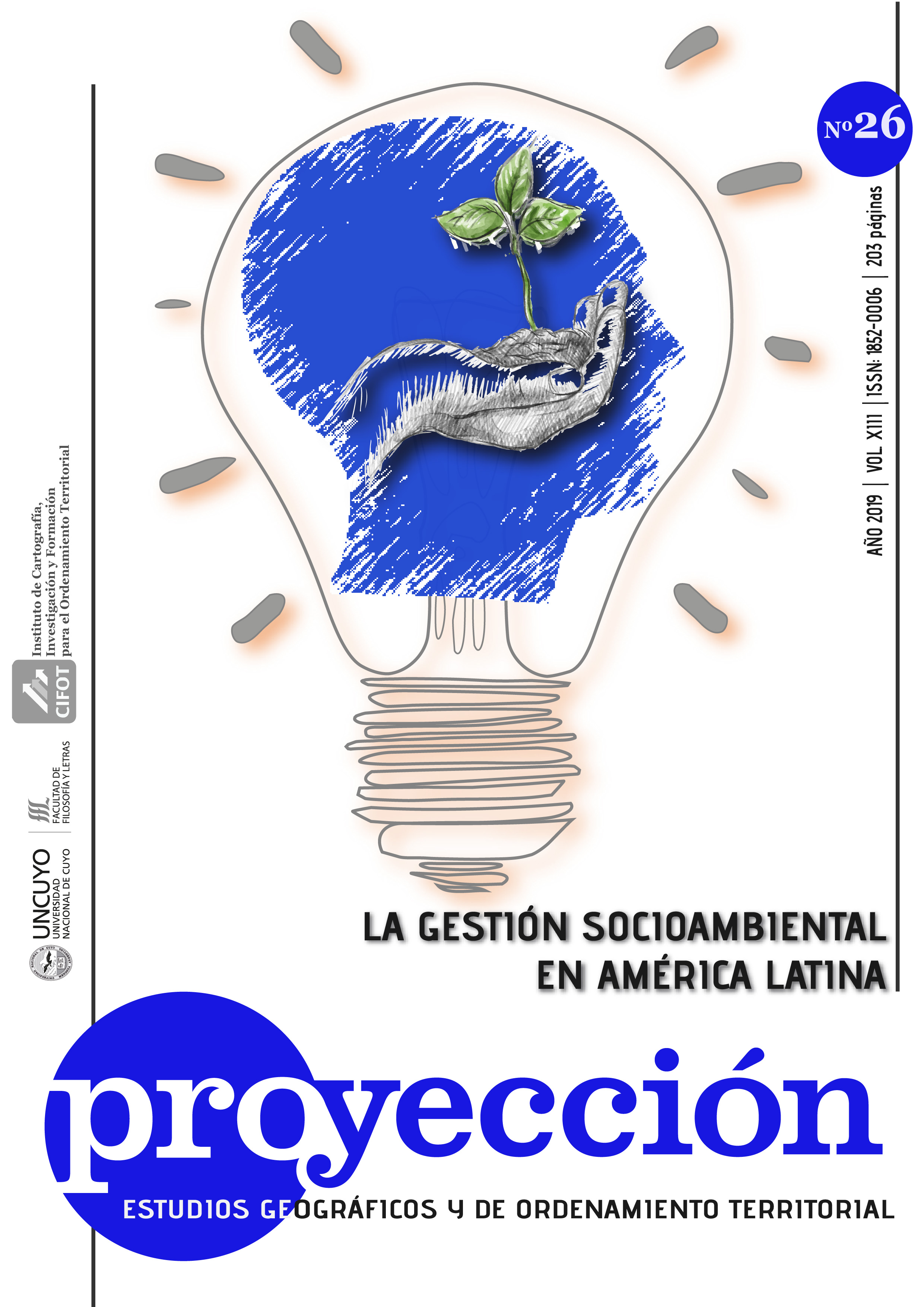Impacto ambiental y percepción social en el Parque Urbano Matlazincas, Toluca, México
Palabras clave:
parques urbanos, percepción social, conservación , manejoResumen
Los parques urbanos enfrentan diversas problemáticas relacionadas con la degradación de la vegetación, perturbación de la biodiversidad y contaminación por residuos sólidos, los asentamientos humanos irregulares e incluso las condiciones de violencia e inseguridad que se presentan en su interior, que ponen en riesgo sus propósitos de conservación de la naturaleza y el bienestar de la población. Es necesario contribuir a la generación de información sobre sus condiciones ambientales actuales y la percepción de los usuarios, a fin de coadyuvar a la toma de decisiones para su adecuado manejo. Por ello, la investigación tuvo como objetivo conocer el impacto ambiental y análisis de percepción social en el Parque Urbano Matlazincas (PUM), ubicado en la ciudad de Toluca, México, con la finalidad de formular estrategias para la conservación ambiental y el bienestar social. Se aplicó una matriz cruzada de impacto ambiental, que permitió relacionar los elementos del medio con las actividades que se realizan. Además, se aplicaron 137 cuestionarios a los visitantes, con el propósito de conocer su opinión sobre las actividades recreativas, deportivas, educación ambiental, apreciación para el arte, la cultura y la ciencia, prácticas religiosas y sentido de pertenencia. En los principales hallazgos destacan los problemas ambientales que generan la introducción de vehículos, la presencia de mascotas y la inadecuada disposición final residuos sólidos. Así mismo, aunque la población reconoce la importancia del parque, realizan actividades deportivas y recreativas, no participan en las actividades ambientales. Se concluye que es necesario fortalecer la difusión de la diversidad biológica, los elementos culturales, artísticos y recreativos del parque, así como promover la participación de diversos actores sociales, a fin de favorecer la conservación ambiental.
Citas
ARIAS-AGUILAR, A., CHACÓN-MADRIGAL, E., Y RODRÍGUEZ HERRERA, B. (2015). El uso de los parques urbanos con vegetación por murciélagos insectívoros en San José, Costa Rica. Mastozoología Neotropical, 229-237
CONAFOR (2017). Marco de Manejo Ambiental (MMA). Recuperado de: https://www.gob.mx/cms/uploads/attachment/file/457568/Marco_de_Manejo_Ambiental_MMA_2017.pdf
FLORES, R., GONZÁLEZ-GILLEN, M., Y SANTOS-POSADAS, H. (2010). Valoración económica del servicio recreativo del parque Hundido de la Ciudad de México. Región y Sociedad
FLORES-XOLOCOTZI, R. (2011). Actividades recreativas en el Parque Hundido del Distrito Federal (México). Estudios y Perspectivas en Turismo, 20 (4), 797-823.
FRUTOS, P., Y ESTEBAN, S. (2009). Estimación de los beneficios generados por los parques y jardines urbanos a través del método de valoración contingente. Urban Public Economics Review, (10), 13-51.
GARCÍA, S., GUERRERO, M. (2006). Indicadores de sustentabilidad ambiental en la gestión de espacios verdes. Parque urbano Monte Calvario, Tandil, Argentina. Revista de Geografía Norte Grande, (35), 45-57.
H. AYUNTAMIENTO DE TOLUCA. (S/F). Guía de recorrido. Documento inédito.
INEGI (2010). Inventario Nacional de Viviendas. Recuperado de: https://www.inegi.org.mx/app/mapa/inv/?fbclid=IwAR0N1hu0jxdR-bBmj2bt6x3vtHEwW1UzjVjR_zr60wwsz2Bb0iNDeW4vkJQ
LEOPOLD, L.B., CLARKE, F.E. HANSHAW, B.B., Y BALSLEY, J.R. (1971). A procedure for evaluating environmental impact. Geological Survey Circular 645. U.S.D.I. Washington, D.C.
MEJÍA HERNÁNDEZ, S. O. (2015). Rehabilitación del parque “El agüita”, en San Felipe Tlalmimilolpan, Municipio de Toluca. (Tesis de licenciatura). Recuperado de: http://ri.uaemex.mx/bitstream/handle/20.500.11799/49318/UAEM-FAPUR-TESIS-MEJIA%2cSANTA.pdf?sequence=1&isAllowed=y
MEJÍA, G. Y GÓMEZ, R. (2016). El impacto social en el parque público General Esteban Baca Calderón “La Loma” de Tepic, Nayarit, México. RICSH Revista Iberoamericana de las Ciencias Sociales y Humanísticas, 5 (9)
MORALES-CERDAS, V., PIEDRA, L., ROMERO, M., Y BERMÚDEZ, T. (2018). Indicadores ambientales de áreas verdes urbanas para la gestión en dos ciudades de Costa Rica. Revista de Biología Tropical, 66(4), 1421-1435
PÁRAMO, P., & MEJÍA, M. (2004). Los parques urbanos como oportunidades para la interacción de los niños con los animales. Revista Latinoamericana de Psicología, 36 (1), 73-84.
PINEDA-LÓPEZ, R., MALAGAMBA, A., ARCE, I., OJEDA, J. (2013). Detección de aves exóticas en parques urbanos del centro de México. Huitzil. Revista Mexicana de Ornitología, 14 (1), 56-67.
PLAZOLA CISNEROS, A; (1998). Enciclopedia de arquitectura. Editorial Plazola editores. Recuperado de:
RICO, J. C. (2004). El paisajismo del siglo XXI entre la ecología, la técnica y la plástica. Madrid: Ediciones Sílex.
RIVERA, L. (2014). Los parques urbanos como indicadores de calidad de vida, símbolos de bienestar y espacios de uso recreativo: una investigación en Bucaramanga (Colombia). Universidad y Empresa, 16 (27), 215-237.
SEDESOL. (2011). Lineamientos para el diseño e implementación de parques públicos de bolsillo. Recuperado de:
http://www.inapam.gob.mx/work/models/SEDESOL/Resource/1592/1/images/recreacion_y_deporte.pdf
SIEMENS AG. (2010). Índice de Ciudades Verdes de América Latina. Munich, Alemania. Recuperado de:
Descargas
Publicado
Cómo citar
Número
Sección
Licencia

Esta obra está bajo una licencia internacional Creative Commons Reconocimiento-NoComercial-CompartirIgual 3.0.
La revista Proyección establece las siguientes condiciones de publicación para los/as autores/as:
- Los/as autores/as conservan los derechos de autor y ceden a la revista el derecho de publicación bajo la Licencia Creative Commons Atribución-No Comercial-CompartirIgual 3.0 No portada (CC BY-NC-SA 3.0) que permite a terceros copiar, distribuir, exhibir y ejecutar la obra citando siempre la fuente y los datos de autoría según la norma prevista por la Revista Proyección. Esta licencia no permite el uso de la obra con fines comerciales.
- Todos los trabajos publicados por Proyección, Estudios Geográficos y de Ordenamiento Territorial serán bajo la modalidad de gratuidad para autores/as y lectores/as.




























